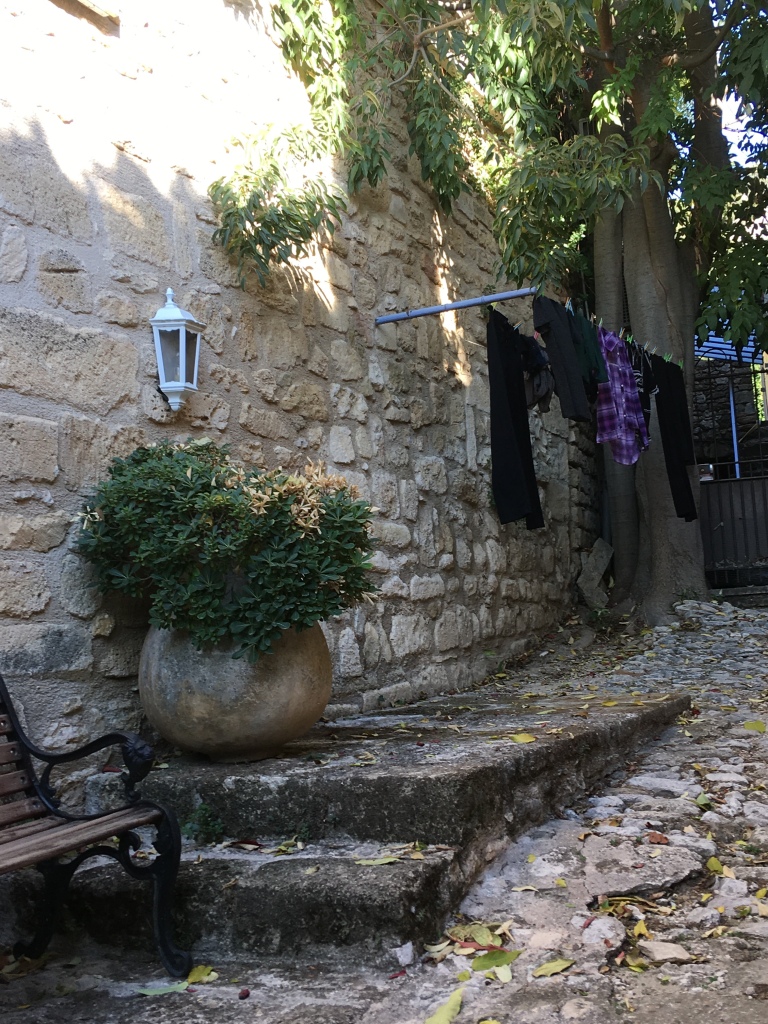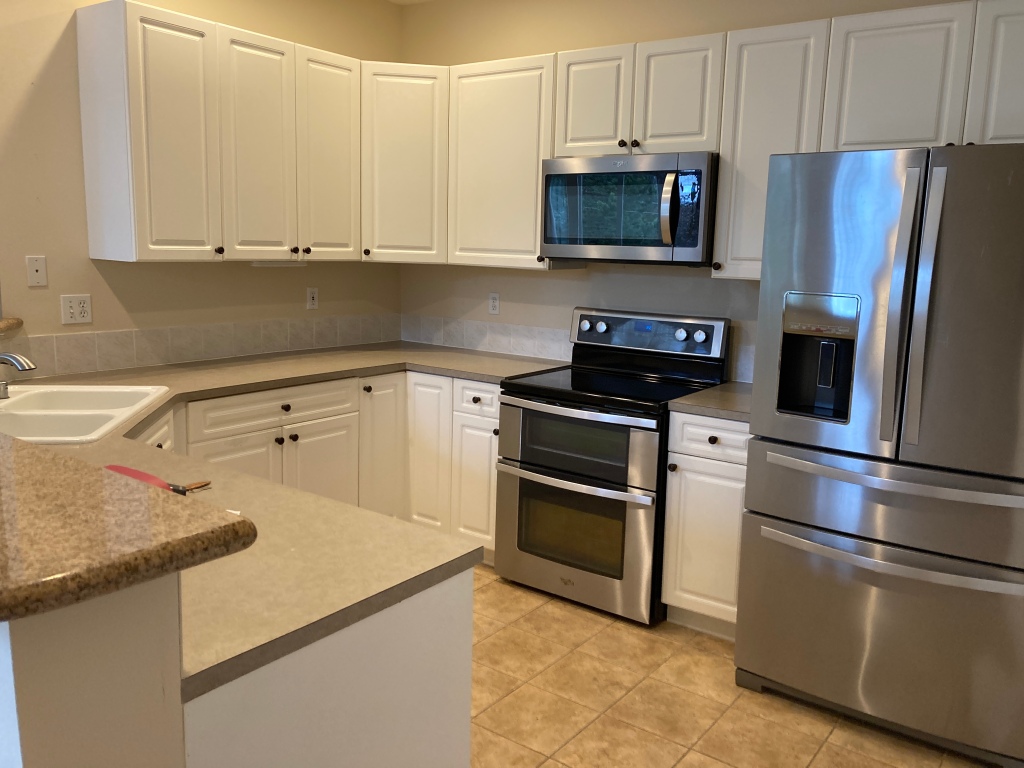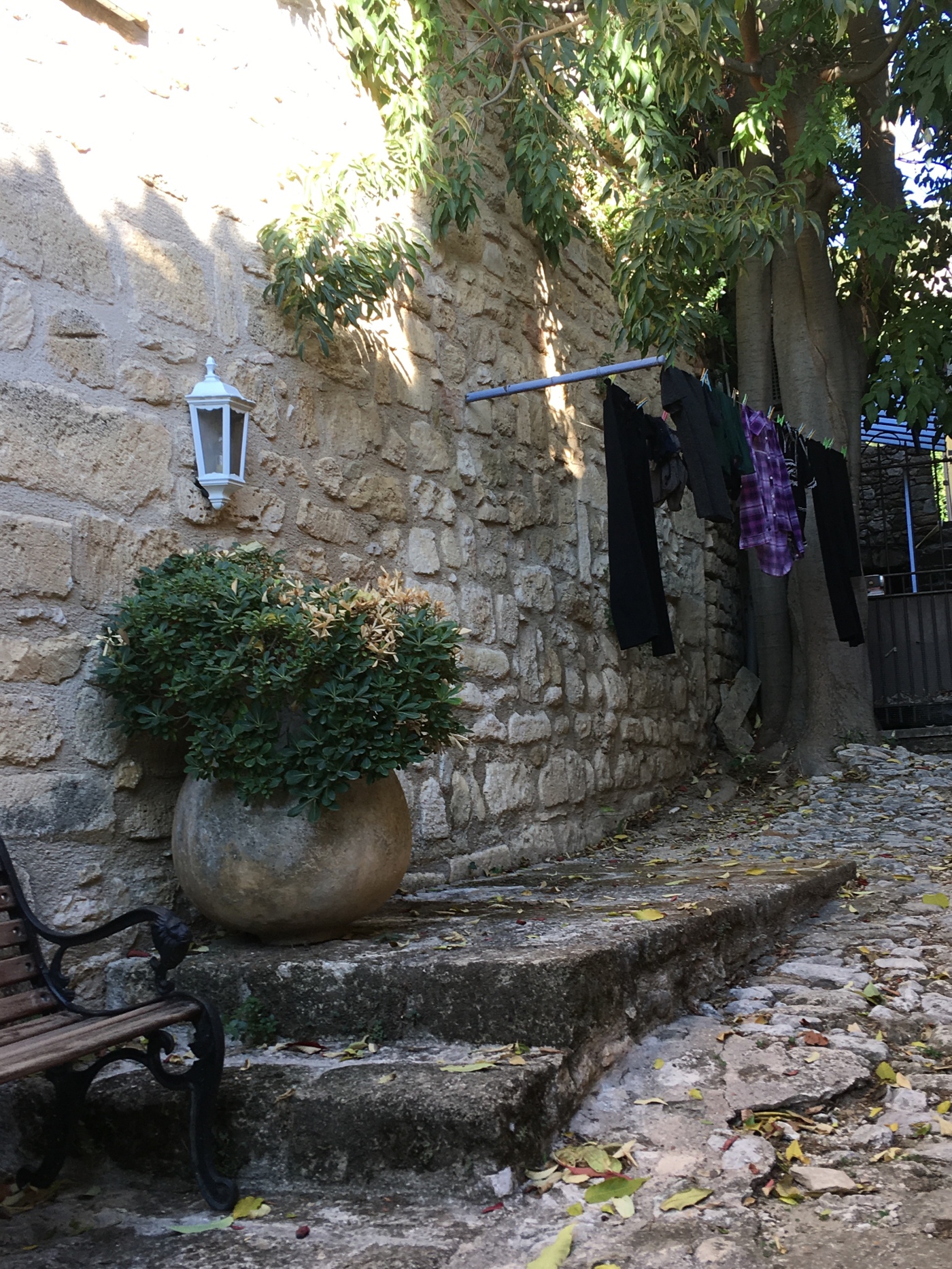When we arrived in France six months ago, we knew there would be a learning curve involved as far as the cultural differences between our two friendly countries. Prior to moving here, we had traveled to France on many occasions, so we were aware of some of these. However, there are a few that we have learned since our arrival that we have found quite curious, a few even puzzling, but hey, when in Rome!
We now understand the ubiquitous shoulder shrug so commonly used by the French. It is used to indicate “it’s France”, “that’s just how it’s done here”, “c’est la vie”. For example, we were ordering lunch in a bistro shortly after arriving here and asked for carafes of wine and water; the waiter said “un pitchet de vin et une carafe d’eau.” When we asked about the difference between a pitcher and a carafe, he looked at us, smiled, and did the famous shoulder shrug; “it’s France” he said.
None of these are right or wrong, rather they are simply different ways of doing things. Here are a few of the ones that stand out for me.
1. Manners
It is a well known fact that the French have excellent manners. They always greet a proprietor when entering a store or place of business. And when leaving a business, the proprietor will always say “merci, au revoir, bonne journee”, which you are expected to say in return. Sometimes we even mix it up a bit and say “bonne après-midi” or “bon week-end” for variety. Just recently we talked with a shop owner who was quite shocked at the number of foreigners who enter her store without saying “bonjour” or even acknowledging her presence. We are often greeted with a quiet “bonjour” when sitting in a restaurant and other patrons pass our table. I like this particular custom, the US is too casual, in my humble opinion.
2. Restaurants
There are so many differences here; first off, if you don’t arrive at noon or shortly after for lunch you will be turned away with the famous “shrug”. The majority of restaurants offer a “menu du jour” or daily menu which includes three courses. You’ll have at least 90 minutes to enjoy your gastronomic experience, which for most people includes an aperitif and wine. There are no bread plates; you set your slice of bread directly on the table. Tipping is not expected, like it is in the US, and it’s perfectly acceptable to occupy a table for hours after ordering only a coffee or tea. And the majority of businesses close during the lunch hours, so workers can also enjoy a leisurely meal. In France, there is actually a labor code that prohibits workers from eating lunch at their desks! In the US, it is considered completely normal to grab a sandwich, burger, or salad and sit at your desk to continue your daily work; l’horreur!

Bread is always served with the first two courses; always! We were enjoying lunch at Bistrot St Julien recently, not far from our home, on a busy, summer day. There was a woman sitting at the table next to us, and a man sitting at the table next to her, both on their own. The server brought the woman her lunch and hurried away. Shortly after receiving her meal, the woman tried to get the attention of the server, but to no avail. Instead, she simply tapped the arm of the man at the next table, who had already finished his meal, pointed to his bread basket, which he readily handed to her. I can’t imagine this happening in the US!
3. Grocery Stores
At the grocery store, you’re expected to bag your own groceries. Stores have reusable bags for sale, but paper and plastic bags are not available like they are in the US. I’ve also noticed that many people do not bag their groceries, they just load them back into the cart, wheel them out to their car, and toss them in the trunk. The shopping carts however, are big, bulky, and hard to handle, and they slide rather than roll. C’est difficile pour moi.

4. Courant d’air
The French keep their doors and windows shut, which means that rooms can be quite hot and stuffy. They seem to have a fear of drafts, or courant d’air, thus the use of AC or even a fan is rare. On our recent trip to Paris during a heatwave, we entered several stores that were completely stifling, to find that the doors and windows were shut tight, even though there was a nice breeze.
We visited Bayeau in July when it was also quite warm; we left our hotel window open since there was a nice breeze. When we returned, we found that the maid closed it while we were out. However, France is well known for outdoor cafes; I find this quite confusing.


5. Clothes Dryers
Most French households do not have clothes dryers, but have clothes lines instead. I believe this is the case in many countries around the world, except the US. It is much more energy efficient this way, and lovely to have your clothes smell so fresh.


6. Refrigerators
The refrigerators here are quite small which means we have to shop more frequently than we did at home. They refer to large refrigerators as “Refrigerateur Americain”.


7. Waiting
Waiting in line at any type of establishment is expected, and just part of life here. At most stores in the US, if the line at a checkout counter gets too long, the clerk will call for additional help. Not in France; you’re expected to wait. We were at a grocery store recently and the woman in front of us left to get an additional item just as the clerk had finished ringing up her large order. The line was long, and we all waited at least three minutes for her to return. When she did return, she didn’t apologize for making us wait. I do have to disclose that the clerk rolled her eyes while we were waiting, so maybe this was a bit excessive. However, a lesson (or daily lesson) in patience is a good thing.
8. Driving
In the US, it’s common to go 5 – 7 miles (or more!) over the speed limit without getting a ticket. But in France, if you go even 2 – 3 miles over the limit, you’ll receive a ticket. There are cameras set up along the roads that are used to measure your speed and if you go over, a ticket will be mailed to you. In the US, this is quite uncommon, most tickets are given only when you get pulled over by a police officer. It is much safer for officers not to have to pull people over. In addition, the majority of the cars here are quite small and get great gas mileage. This is a good thing since gas is very expensive and the roads are quite narrow. You won’t see many huge SUVs here!
These are just a few of the differences that stand out for me, there are many more, and as I mentioned at the beginning of the article, there are no right or wrong ways, just different ways to do things. I have embraced most of these and appreciate that some are even environmentally friendly. A few I still struggle with, like the stuffy rooms and small refrigerators; I do miss my big refrigerateur americain.
Oh, and one more thing, as I mentioned in last week’s blog, theTravelsketcher and I went to Laval to get our COVID boosters. After receiving the injection, the pharmacist put a piece of medical tape over the injection site. In the US, you’d get a bandaid – maybe even a Tweety Bird bandaid. We thought the tape was odd, but hey, it’s France!
As always, I would love to hear your thoughts and comments, so leave a message if you’re so inclined.
Tricia

Yes, not right or wrong, just different, viva la difference !
LikeLiked by 1 person
As someone who has never been to France, this was really interesting to learn these differences. The closed windows one would bother me for sure, we open our windows whenever we can.
LikeLiked by 1 person
Thanks for your comment, Diana! I have a hard time with the stuffy rooms too. By the way, I tried to leave a comment on you “How to get Married in a National Park” post, but the comment kept disappearing for some weird reason. I wanted to say that the you were a beautiful bride and picked a beautiful location! I hope you and your husband have a lifetime of happiness!
LikeLiked by 1 person
Thank you so much!
LikeLiked by 1 person
We were visiting relatives in southwest England in 1980. I went to the local deli down the street, bought some food, and it was left on the counter. The clerk had to run to the back for a box so I could carry my items back up the street! I wondered why people were carrying baskets into the stores!
LikeLiked by 1 person
Great memory! It took us in the States a long time to get use to bringing our own bags to the store!
LikeLike
and thanks for reading and commenting!
LikeLike
Such interesting observations. It’s crazy to me everyone would have a clothes dryer in their house. I dry all of mine au naturel, in my kitchen haha! As I sit and type I have two washing lines out with our clothes drying. It’s funny how things are just ‘normal’ in certain cultures.
LikeLiked by 1 person
I’m old enough to remember when clothes dryers were not as common in the US as they are now, and clothes were hung outside. By the mid 70s though, they were quite common. Too bad really since they’re such hogs when it comes to electricity use. Thanks Han, for reading and sharing your thoughts!
LikeLike
Loved hearing these differences between France and the US! I enjoy both of your posts so keep them coming!
LikeLiked by 1 person
Thanks Nancy! I’m so glad you enjoy them and I appreciate your comments.
LikeLike
I love your observations, I knew of some but the two that really struck me were the closed windows and making people wait so long in line! Imagine if you were waiting in line in a store with all of the doors and windows closed on a hot day!! Maggie
LikeLiked by 1 person
Thanks Maggie! Yes, that would be uncomfortable for sure! Thanks for reading and commenting!
LikeLike
I was nodding along to all of your points as I read them! After having lived abroad in France for four years (and since returning home to the US), I still remember all of the idiosyncrasies in everyday French life…but what might be weird to outsiders are considered normal to the French. The courant d’air really baffled me, and it still to this day: it also drove me mad that none of the windows had screens to prevent flies (and dreaded mosquitos) from flying inside– sometimes even birds! All the same, it’s about adapting, even appreciating, the nuances of the host country that really makes the place a new kind of home!
LikeLiked by 1 person
Yes, the courant d’air does seem strange to me as well. And you’re right about window screens! A few months ago, a bird flew into our atrium. Thankfully, we were able to guide it out to safety. However, like you, I really love France. By the way, are you fluent in French?
LikeLiked by 1 person
I’m not fluent, but I have about a C1, near C2 level of French. Je me débrouille!
LikeLiked by 1 person
That’s pretty close to being fluent; well done! I’m hoping to reach that level. Thanks again for your comments!
LikeLiked by 1 person
A very interesting and enlightening article, Tricia. I think everyone could learn from the say-hello-goodbye and perhaps smile when someone enters your shop/cafe/restaurant. One of my pet hates in The Balkans and even here in Georgia is the radio silence you get when you enter a place. Rather, you might get a bored look or even a glance of disdain. Call it service, call it basic etiquette or politeness, it is completely lacking in most establishments. Love the bit on restaurants, so many curiosities there and a minefield I imagine for first timers. The driving in most countries is generally scary in my experience and quite precarious for pedestrians like ourselves.
LikeLike
Thanks Leighton; I’m glad you enjoyed it. The indifference and disdain you described in Georgia would be difficult to handle. Makes you wonder how establishments like that stay in business! Driving in France feels safer than in the US, but is nerve wracking since most pedestrians don’t pay close attention to the traffic. Thanks again for sharing your thoughts!
LikeLiked by 1 person
Related to your #1 was something I learned from my teacher in a community ed French class a few years ago: in addition to always saying “bonjour” upon entering a store, it’s important to stop there. He said the American way of continuing with “how are you/how are you doing/etc.” is considered too familiar for French people. It feels intrusive (because you and the shopkeeper don’t know each other). Sure enough, the husband had to test it. In a little patisserie in Chinon, after the “bonjours” were exchanged, the husband asked, very nicely, “How are you?” (in French). He got an unpleasant look, and we were both instantly and thoroughly convinced we’d been given good, useful, and accurate info by my teacher.
LikeLiked by 2 people
Exactly! Polite, but not overly friendly. Thanks for your comment and good advice too!
LikeLiked by 1 person
What a interesting comparison of cultures! I love the greeting a shop owner, seems so much more respectful, and the leisurely time to eat a meal. But I think the no dryer and small fridge would definitely take some getting use to.
LikeLiked by 1 person
I agree; I have completely embraced some of the differences, others not so much. Thanks for reading and commenting!
LikeLiked by 1 person
I like the fact that workers are not allowed to eat at their desks 😉. But I definitely like my windows to be open – even on a cold day … good fresh air! But what surprised me most in your post was the laundry stands in the parking lots. We of course have laundromats, but you will never find a laundry stand on its own – that was quite interesting! However, I like to dry our clothes on the washing line (fortunately we have plenty of sunshine).
LikeLiked by 2 people
I agree with you; I love having the windows open even on chilly days. I was also quite surprised about the laundry stands in parking lots; I laughed out loud when I first saw them. I’m getting use to drying our clothes outside, but the rough towels take some getting use to. Thanks again for your comments and observations!
LikeLiked by 1 person
Interesting! As a person who was born in Finland and live in Australia, I am always interested in cultural differences!
LikeLiked by 1 person
I’m glad you found it interesting! Thanks for sharing your thoughts.
LikeLike